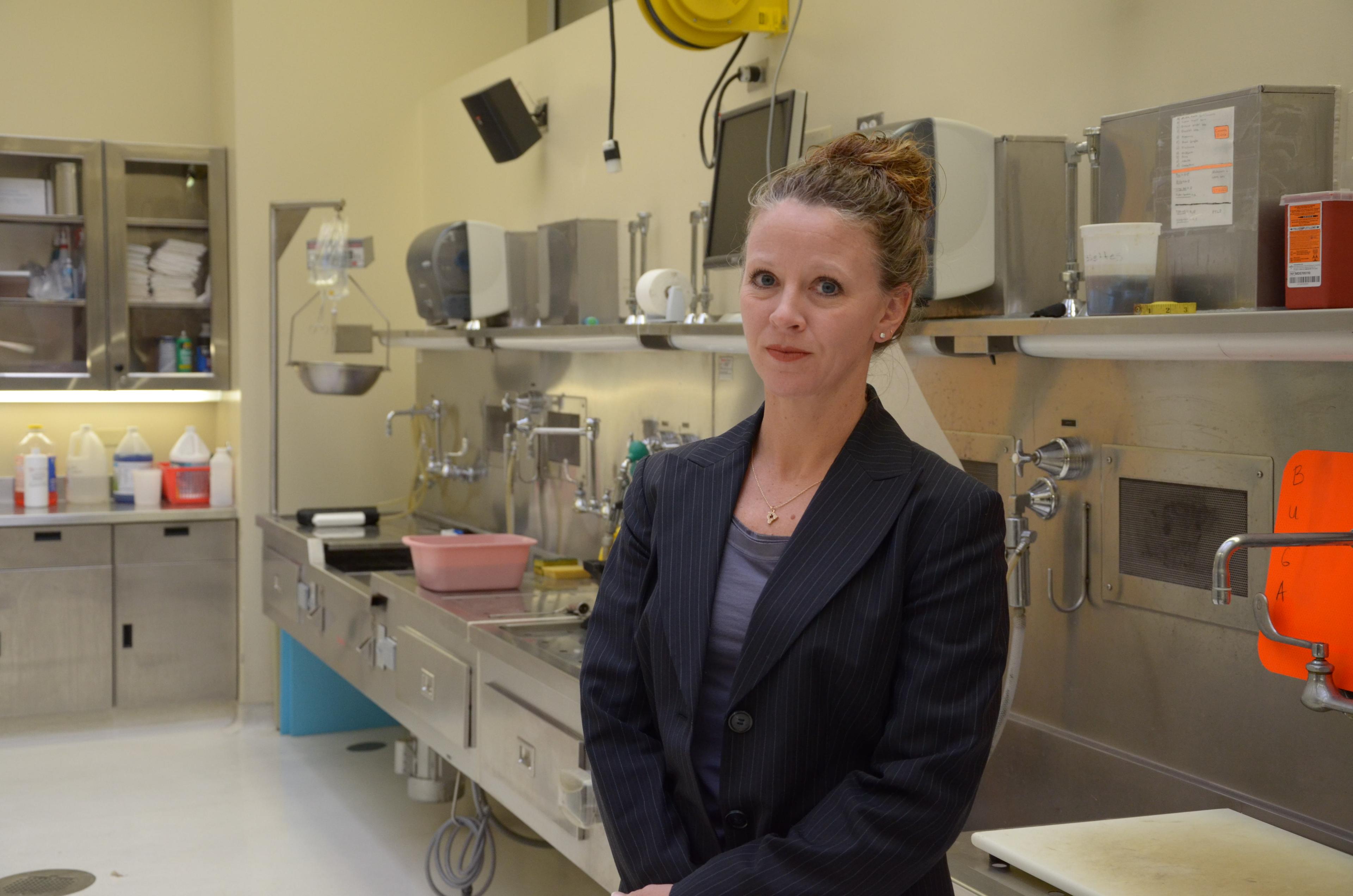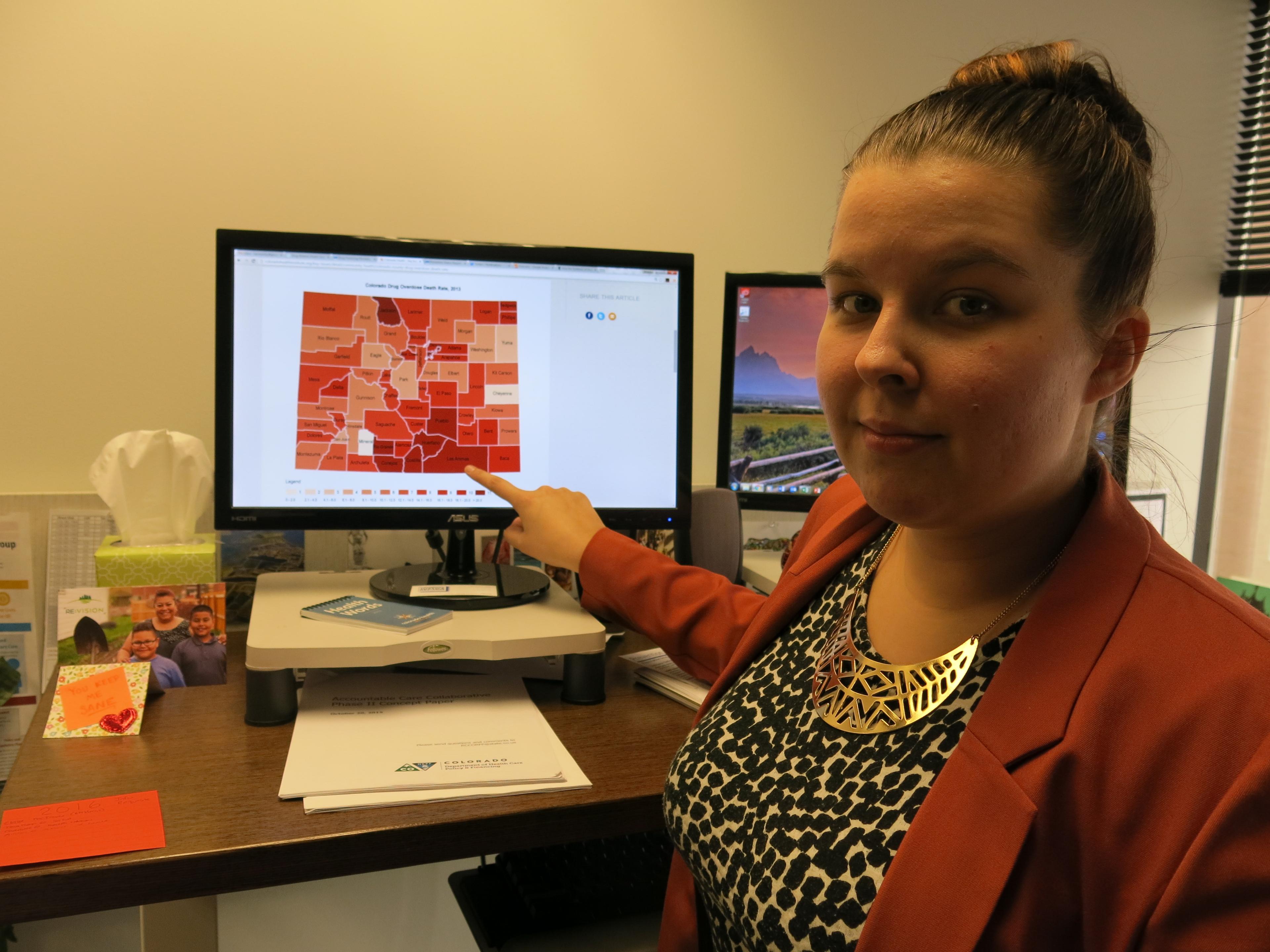Deaths from drug overdoses in Colorado are reaching a crisis level. Not only does the state’s death rate from overdose top the national average, but those numbers have increased across the state.
Arapahoe County Coroner Dr. Kelly Lear-Kaul sees the fallout from those statistics all the time. Her county’s drug overdose rate has doubled from fifteen years ago, with about three quarters of the cases involving prescription painkillers like Oxycodone, an opioid medication better known by names like Percocet or OxyContin.

Lear-Kaul saw 100 drug overdose deaths in the county last year, she says while showing a visitor her autopsy room. Two bodies on gurneys await an exam to determine how they died.
“They fill up the gurneys," she says, and the families that come to identify the bodies have varied reactions -- some are surprised.
“They’ll say ‘oh yeah, he’s been groggy and I know he took too many or he kept going back to his pill bottle," Lear-Kaul says. "So it’s not a surprise for a lot of people. For some it is, definitely.”
Others are in denial, or simply had no clue as to what was going on -- like the case of one man with a history of chronic pain.
“He was not getting [the drugs] from a doctor, he was getting them from another person who was providing them and his family didn’t know that," she says. "It was a total surprise.”

As the time-lapse map using CDC data from 2002-2014 below shows, "no county in the state gets any lighter."

In fact twelve of the counties, most of them rural but also including Denver, have among the highest rate of drug deaths in the country.
“What we saw that was really striking to us was that rarely do we see a health metric that moves so quickly and is so widespread," Keeney says.
 “The CDC characterizes [the drug overdose crisis] as one of the top four epidemic facing the United States right now at the level of cancer, obesity and heart disease," says Rob Valuck, a pharmacy professor at the University of Colorado, who is coordinating center director for the state's Colorado Consortium for Prescription Drug Abuse Prevention.
“The CDC characterizes [the drug overdose crisis] as one of the top four epidemic facing the United States right now at the level of cancer, obesity and heart disease," says Rob Valuck, a pharmacy professor at the University of Colorado, who is coordinating center director for the state's Colorado Consortium for Prescription Drug Abuse Prevention.
Just recently, he added, drug overdose deaths overtook motor vehicle accidents as another leading cause of death. Valuck says for the most recent year with data available, around 900 Coloradans died. He says in Colorado and most states, roughly two thirds of the overdose deaths are from pharmaceutical opioids, like Oxycontin, and one third are from heroin.
But why is it happening? Valuck offers lots of reasons. Over-prescription of painkillers like Vicodin or Percocet is one, but these medications can also interact badly with other drugs.
“It’s just more common than people think and they’re more powerful than people think," Valuck says. He says as a nation, the U.S. consumes "between 80 and 90 percent of the world's opioids. I don't think we have 80 to 90 percent of the world's pain."
“It’s a complex problem," says Shannon Breitzman, who heads the division that monitors prescription drug abuse with the state health department. One major problem is people not properly disposing of legitimately prescribed -- but leftover -- pills.
“They pop them in their medicine cabinet. They’re not locked," Breitzman says. "Somebody comes along and takes them, family members, kids and then diverts them, uses them themselves or sells them or shares them with other people.”
The epidemic disproportionately affects men aged 25 to 55.
 This is something Karen Hill knows all too well. In her Aurora home, Hill keeps a chest filled with mementos from her late son, J.P.
This is something Karen Hill knows all too well. In her Aurora home, Hill keeps a chest filled with mementos from her late son, J.P.
“This stuff is all from the funeral, and everybody wrote letters and cards,” said Hill, who gently lifts items out of the chest, like photos and J.P.'s blanket from his childhood.
J.P. was 26 when he died a little over three years ago. He had previously taken prescription meds recreationally. At the time of his death, he was on an anti-anxiety medication that was causing insomnia. He found some Hydrocodone prescribed for his grandmother and took a single dose, perhaps to help him sleep.
The combination killed him.
“At first we didn’t know, we were completely confused. I’m a hundred percent convinced now it was unintentional," Hill says. She describes her son as tall, fit, fun-loving and a huge football fan. The shock of his death motivated the family to form a non-profit, called the JP Prescription Drug Awareness Foundation, to build public awareness.
“We need to do something about this and keep families from going through what we are," Hill says. "Nobody’s aware of it. We really need to get the word out there."
They’re taking their message around the state, including the rural areas where the numbers have shot up so dramatically.
One thing her group stresses is safe use, safe storage and safe disposal of prescription medications.
"We don't think of them as a killer. It's just a prescription written by a doctor so it must be safe," Hill said. "And we just leave it in the medicine cabinet without realizing that it's such easy access for someone."









